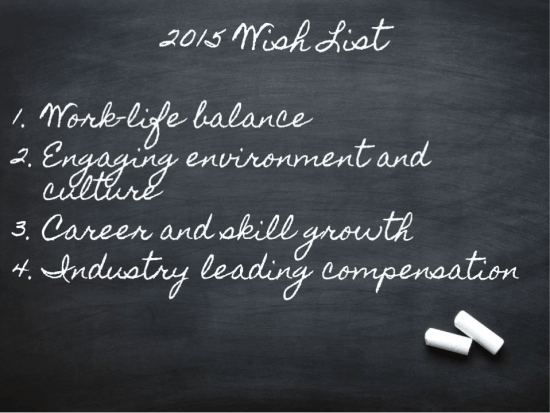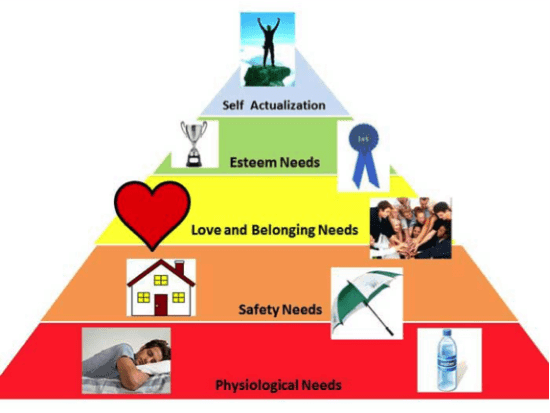What do your employees want from you in 2015? Which of their needs are satisfied and which are lacking? These are questions all managers should be consistently asking. Knowing the answers to these is part of incorporating Strategic HR into your organizational goals and vision for the coming year.
We, at Salopek & Associates, took it upon ourselves to ask this question. At a recent networking event with HR and Business enthusiasts, we posed the question: “What Tops your Employer Wish List for 2015?” The resounding response was that individuals are looking for work-life balance; they want flexible work schedules and arrangements.
Oh, so it’s not more money? But this is Calgary, right?
Not only was compensation not the most needed element, it actually came out least popular. To investigate why this might be, we turned to Maslow’s Hierarchy of Needs. According to Maslow, once a primary need has been met, employees will begin seeking a higher need. The lower level, basic needs including physiology (food, shelter, warmth, sleep) and safety (security, order and law) are satisfied through salary and benefits. Once this has been satisfied (as it generally will be for working Albertans) individuals will begin pursuing the next needs in the hierarchy: belongingness (friendship and acceptance), esteem (including achievement, independence and respect) and finally, self-actualisation (self-fulfillment and personal growth). Maslow later added a few more high level needs to the Hierarchy, with the highest level being transcendence – the need to help others achieve self-actualization.
The fact that the survey results demonstrated that only 9% listed compensation on their Wish List for 2015, does not mean that majority do not value compensation or would be happy with a pay cut – it may simply mean this need has been fulfilled and they are now seeking the next on the hierarchy.
So how do you meet Employees’ needs throughout 2015?
Work-life Balance
Take a moment to reassess the work-life balance your organization promotes. This includes the obvious such as offering compressed workweeks and telecommuting options, but also means addressing conflicts such as work-overload, childcare stresses, fitness and mental health. Get creative in designing work-life balance initiatives that suit the needs of your employees and enable them to balance their work and their personal life. Some examples are:
- Onsite childcare
- Remote working opportunities
- Fitness facilities or fitness membership assistance
- Employee Assistance Programs
- Flex days for personal leave
- Flexible start/end times to avoid peak traffic times
Engaging Environment and Culture
When employees feel that they cannot be themselves at work, they will not engage fully. The culture of your organization will determine how expressive individuals can be, and consequently, how engaged they are with their team and their work. Open, effective communication and clear channels for feedback will influence whether your workplace is one of inclusion or discrimination. On top of that, employees of all generations desire fun in the workplace; a culture that is open to laughter, candid conversations and camaraderie.
Career and Skill Growth
One of the most valuable gifts from an employer is the opportunity for training and development. Today’s young professionals crave knowledge; they are sponges eager to absorb everything they can. This means budgeting in a training and development allowance so you can invest in your employees’ working abilities meanwhile fulfilling their desire for self-improvement.
Compensation
Naturally, employees need compensation that is fair and sustainable. This includes salary, bonuses and benefits that allow them to meet their lower level needs. Your method of compensation needs to match the industry, the work functions (commission vs salary, opportunities for overtime etc.) and more specifically, your people. If you have high-performers on the team with individual goals, you may need to consider performance-based pay; if team work and collaboration is the focus then performance based pay might not be as suitable.
Remember, these are the results from our own survey. Your employees will have different needs and deserve the opportunity to make those needs known. Before 2015 gets away from you, schedule in some time to meet with and hear from your employees. What is on THEIR wish list for 2015?



